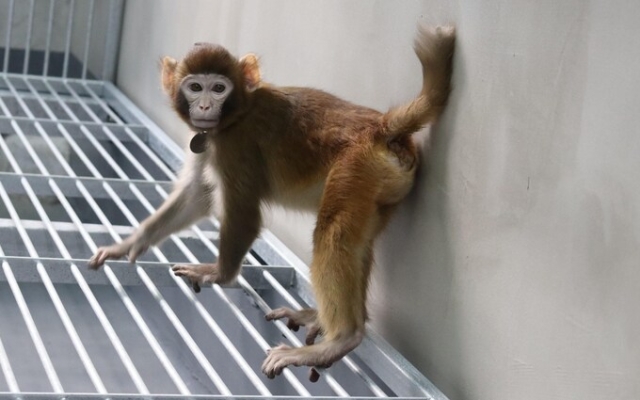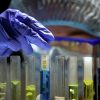 Cloned somatic cell of rhesus monkey named 'ReTro' Photo: QIANG SUN
Cloned somatic cell of rhesus monkey named 'ReTro' Photo: QIANG SUN
Chinese scientists have successfully cloned a monkey that lived for two years, the first in the world.
The researchers cloned the primates and then used the same method that created Dolly. Sheep in 1996, but none ever lived long, dying either before birth or shortly after.
However, a modified technique designed to create a stronger placenta allowed a rhesus monkey to be cloned, born and live. has been healthy for over two years, making it the longest-lived primate clone. The animal received the «ReTro» marking.
However, out of 113 attempts, only one birth was successful.
The process, called somatic cell nuclear transfer (SCNT), involves taking genetic information from a standard cell and implanting it into the egg of another monkey that has had its own genetic material removed.
Placing chromosomes from a body cell into a free egg that acts as a donor is the same process used to create Dolly the sheep.
Dogs, cattle, mice and goats are among the other species subject to cloning using this process, but in primates this has proven difficult, with a success rate of only 1 percent.
 ' ;Retro' was the only monkey to survive after 113 attempts. Photo: QIANG SUN
' ;Retro' was the only monkey to survive after 113 attempts. Photo: QIANG SUN
Such primate cloning is prohibited in Europe for ethical reasons, but is done legally in China.
A team from the Chinese Academy of Sciences cloned a crabeater-eating macaque in 2018, but the method had problems and low survival rates.
The same scientists analyzed the development of a normal IVF embryo and compared it with a cloned embryo and found that the clones had difficulty creating a proper placenta and, as a result, rarely attached to the uterus of their surrogate mother.
Another step was added to the process of correcting this situation, which involved replacing the defective layer of cells called trophoblast that surrounds the growing embryo. These cells serve as a source of nutrition and are supposed to help the inner cells that will become the monkey thrive.
This layer is often irregularly shaped and too small in clones, making the birth nonviable.
The process update allowed scientists to grow both a cloned embryo and a normal IVF embryo. The internal cells of both were excised and the clone placed into the healthier layers that form the IVF placenta.
“Remarkably, using this approach, we successfully achieved a live birth in a healthy [cloned] rhesus monkey. it had been in place for more than two years at the time the study was prepared for publication,” the scientists said in their paper published in Nature Communications.
They added that this strategy “holds great promise” for improving dismal cloning success rates.
Scientists have done work to see if they can create more cloned lab monkeys as their long-term health and survival rate are «increased.» is of great importance» because they are «widely used for basic and clinical research.»
However, scientists also believe that the process of cutting out cells from an early embryo and introducing them into a healthier membrane could help people trying to Conceive a child using IVF.
If people having difficulty conceiving have problems with implantation, they said that due to problems with implantation, this process may be a possible route through IVF in the future.
Dr. Luis Montoliu, researcher at the National Center for Biotechnology in Spain, said this work is based on the same principle. The team's attempt to clone macaques six years ago, and the efficiency of the process remained a major problem that prevented its use in humans.
In the previous study, just 1.5 percent of the embryos resulted in a live birth, and in this study, only one in 113 resulted, a success rate of less than one percent.
“Cloning crab-eating macaques and rhesus macaques demonstrate two things, — he said.
— Firstly, primates can be cloned. And secondly, it is extremely difficult to achieve success in these experiments, with such low efficiency, once again ruling out human cloning.
“This low efficiency confirmed the obvious: human cloning is not only unnecessary and controversial, but if attempt was made, it would be extremely difficult and ethically unjustifiable.
“Finally, it is worth noting that these experiments could not be carried out in Europe, as European Union legislation on animal experimentation prohibits the use of non-human primates , unless the experiment is aimed at investigating a serious, life-threatening disease affecting humans or the primate species itself, which is not the case in this experiment,” Dr. Montoliu added.


























































Свежие комментарии